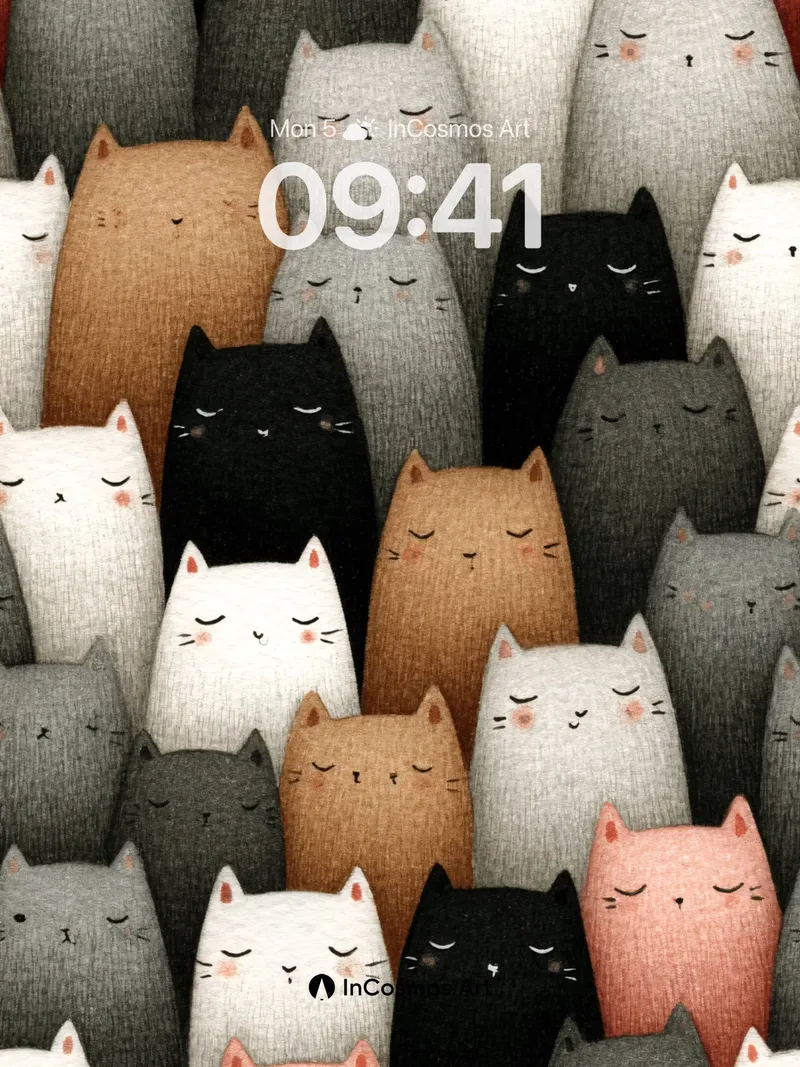Beyond human-imposed order, cats exist through a different logic. They do not rely on language but form silent dialogues through posture, gaze, and arrangement. In these depictions, cats cease to be pets and become symbols, carriers of emotion, metaphors for collective behavior. The contrast between black and white, the layering of colors, the dynamic silhouettes—all convey a rhythm transcending individual life. When countless eyes converge into a sea of stars, they no longer belong to corners beneath rooftops but manifest as tangible collective memory. This memory is not historical echo but projection of present emotion—loneliness, curiosity, alertness, tenderness—all flow within.
The Silent Language of Cats
Cats communicate without words. Pupil dilation, ear orientation, whisker tremors—all transmit information. In dense compositions, each cat maintains an independent stance yet is drawn by the overall structure. This contradiction reveals an intrinsic tension in social animals: longing for freedom while unable to escape group frameworks. Their eyes are focal points and mirrors, reflecting the observer's inner state. White eyes against black backgrounds resemble stars in night skies, reminding that existence itself holds meaning.
Color Psychology in Feline Groups
When cats are assigned diverse hues, they transition from individuals to symbols. Red signifies passion and danger, white purity and distance, black mystery and silence. Repetition and interplay of colors create visual rhythms akin to urban traffic or emotional fluctuations in crowds. Some designs juxtapose cats with dogs, suggesting blurring boundaries between species. This coexistence is not mere decoration but simulation of social relations—differences persist, influence one another, yet resist fusion.
Dynamic Cosmic Allegory
Jumping feline silhouettes unfold against starry backdrops, resembling life forms in the cosmos. Their trajectories defy physical laws, extending instead from emotional impulses. Tail arcs, body stretches all depict attempts at free will. This motion is not for action but for being. Paths traced in midair challenge gravity and linger in time. Here, cats are no longer terrestrial creatures but inhabitants of the spiritual realm.
Weaving Collective Memory
When cat imagery repeats densely, they transcend biological reality to become cultural symbols. Fur texture, facial details, postural variations narrate memories reinforced through repetition. These memories belong to no single entity but emerge from countless similar forms. Like a collective dream, an unconscious resonance. In warm scenes dotted with autumn leaves, cats display serene expressions, as if recounting stories of belonging and peace.
Topology of Emotion
Feline groupings form emotional topologies. Dense clustering evokes pressure, sparse distribution loneliness, color gradients summon hope or melancholy. These arrangements are not random but responses to human psychological states. Through non-verbal means, they expose modern society’s paradox: yearning for connection yet fearing engulfment; needing recognition while seeking uniqueness. The presence of cat groups is precisely this complex psychology made visible.




















